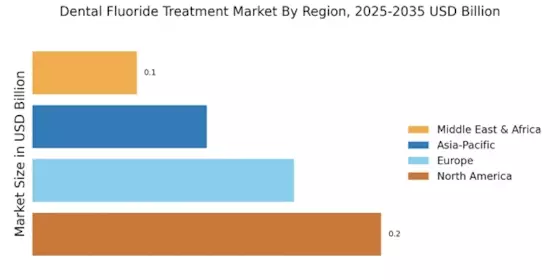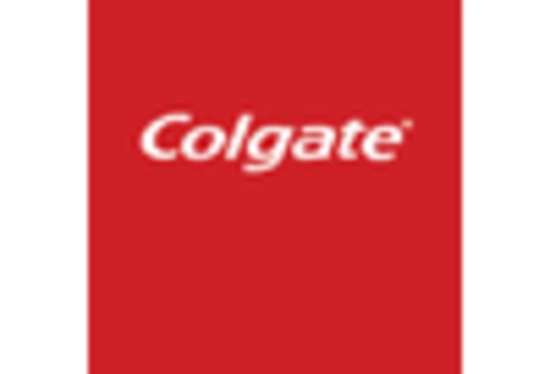Rising Incidence of Dental Caries
The increasing prevalence of dental caries among various age groups appears to be a primary driver for the Dental Fluoride Treatment Market. Studies indicate that nearly 2.3 billion people suffer from caries in permanent teeth, highlighting a significant public health concern. This rise in dental issues has led to a greater emphasis on preventive care, with fluoride treatments being a cornerstone of such strategies. As dental professionals advocate for fluoride use to combat caries, the demand for fluoride treatments is likely to escalate. Furthermore, the World Health Organization has recognized the efficacy of fluoride in reducing caries, which may further bolster its adoption in dental practices. Consequently, the rising incidence of dental caries is expected to propel growth in the Dental Fluoride Treatment Market.
Government Initiatives and Regulations
Government initiatives aimed at improving oral health standards are likely to play a crucial role in the Dental Fluoride Treatment Market. Various health organizations and governmental bodies have implemented policies promoting the use of fluoride in community water supplies and dental products. For instance, certain countries have mandated fluoride varnish applications in schools and community health programs, which could significantly increase the accessibility of fluoride treatments. Additionally, public health campaigns that educate communities about the benefits of fluoride are expected to enhance awareness and acceptance. As these initiatives gain traction, they may lead to a more robust market for fluoride treatments, as more individuals seek preventive care options to maintain oral health.
Growing Focus on Preventive Dental Care
The increasing emphasis on preventive dental care is a significant driver for the Dental Fluoride Treatment Market. As awareness of the long-term benefits of preventive measures grows, more individuals are seeking fluoride treatments as a proactive approach to oral health. This trend is particularly evident among parents who prioritize their children's dental health, leading to a rise in pediatric fluoride applications. Market data suggests that preventive dental care is projected to grow at a compound annual growth rate of over 5% in the coming years. This shift towards prevention rather than treatment is likely to sustain demand for fluoride treatments, as they are recognized as a vital component of effective oral health strategies.
Demographic Trends Favoring Fluoride Use
Demographic shifts, particularly among younger populations, are influencing the Dental Fluoride Treatment Market. As millennials and Generation Z become more health-conscious, there is a growing inclination towards preventive dental care, including fluoride treatments. This demographic is more likely to seek regular dental check-ups and embrace treatments that promote long-term oral health. Additionally, the rise in urbanization and changes in lifestyle habits may contribute to increased exposure to dietary sugars, further necessitating the use of fluoride to combat potential dental issues. Market analysts suggest that this demographic trend could lead to sustained growth in the demand for fluoride treatments, as younger generations prioritize oral health and preventive measures.
Technological Innovations in Dental Treatments
Technological advancements in dental care are transforming the landscape of the Dental Fluoride Treatment Market. Innovations such as laser-assisted fluoride application and smart delivery systems for fluoride treatments are emerging, enhancing the effectiveness and efficiency of fluoride applications. These technologies not only improve patient outcomes but also streamline the treatment process, making it more appealing to both dental professionals and patients. Moreover, the integration of digital tools in dental practices allows for better tracking of patient progress and treatment efficacy. As these technologies become more prevalent, they are likely to drive demand for fluoride treatments, as practitioners seek to adopt the latest advancements to provide superior care.


















Leave a Comment